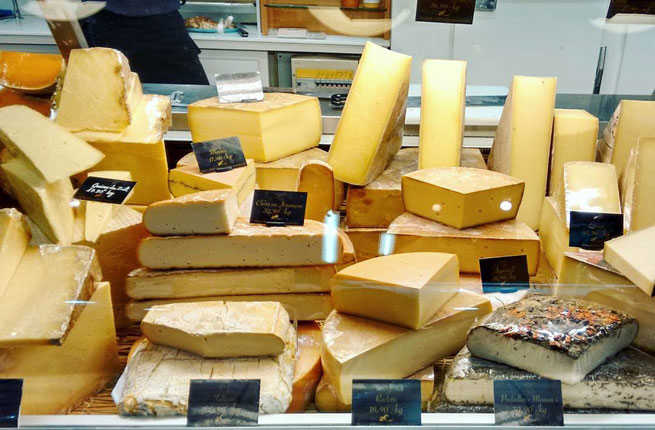
Somewhere in Toulouse at this very moment, potatoes are sputtering in goose fat, apricot cakes are rising in a warm oven, and soups are bubbling in big clay cassoles. This is the heart of French comfort-food country, a meat-and-potatoes paradise where foie gras is considered weeknight fare and cassoulet—that garlicky local stew with sausage and duck confit—is championed by an elected confrérie of chefs. Sure, the city’s pink-brick streets are lined with modern restaurants that run the gamut from taco joints to sushi bars, but it would be a shame to leave town without tasting these soul-warming classics that always have us coming back for seconds.—Benjamin Kemper

Cassoulet
A humble bowl of beans seldom qualifies as a top tourist attraction, but cassoulet—with its meaty, unctuous broth and fork-tender morsels of pork and duck—has been luring hungry travelers to Toulouse for more than a century. Although Toulousains have been known to fight tooth and nail about what meats, vegetables, and herbs are permissible in the dish, one ingredient is non-negotiable: the creamy lauragais or tarbais beans harvested just downriver from the city.
Where to Eat: It doesn’t get more classic than the cassoulet at Le Colombier, an unassuming, family-run bistro established in 1873 that specializes in a goose-centric version of the iconic dish.
Read More: 7 Unexpected Finds in Toulouse
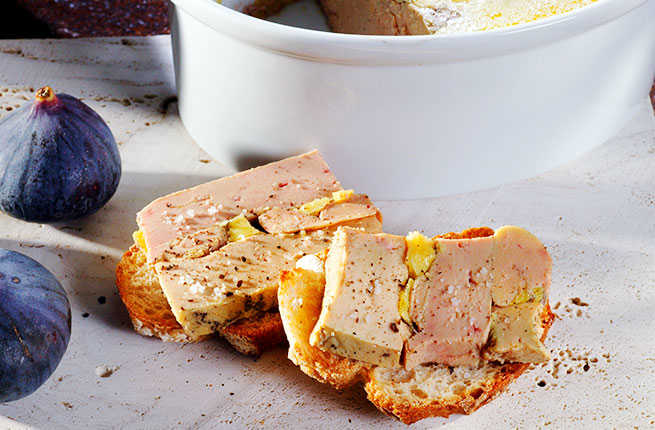
Duck Everything
Foie gras, pâté, confit—duck finds its way onto most menus in Toulouse, whether you’re dining on plastic plates or fine china. But the birds raised in southwest France are no ordinary waterfowl; by law, they must be matured for at least 81 weeks en plein air and fed only local herbs and grain. You can taste the superior quality in dishes like cassoulet—whose crown jewel is an ultra-crisp confit duck leg—as well as in lesser-known Toulousain specialties such as dry-cured duck sausage; pan-fried gizzards; and grattons de canard, dangerously addictive duck cracklings.
Where to Eat: Does it get more decadent than “all-you-can-eat foie gras”? That’s the sales pitch at L’Os à Moëlle, a homey restaurant in the Les Chalets neighborhood that offers one of Toulouse’s best bargains in dining. Be forewarned, this is no place for moderation: a four-course meal with bottomless foie and abundant local wine comes to less than 50 euros a head.
PLAN YOUR TRIP: Fodor’s Toulouse Guide

Le Fénétra
One of Toulouse’s disappearing dishes, le fénétra is so obscure that many locals have never heard of it. Tant pis. It’s said that some version of the dessert has been baked in Occitan ovens since Roman times, which comes as no surprise when you consider its mouth-watering main ingredients: candied lemon peel, sweet butter, toasted almonds, and apricot preserves. These come together in a show-stopping, multi-layered hybrid between a jam tart and a génoise.
Where to Eat: When it comes to le fénétra, there aren’t many keepers of the flame left in Toulouse, which explains why travelers come from far and wide to Régals, a small bakery that often sells out of the cakes before noon.
Read More: 7 Unexpected Finds in Toulouse
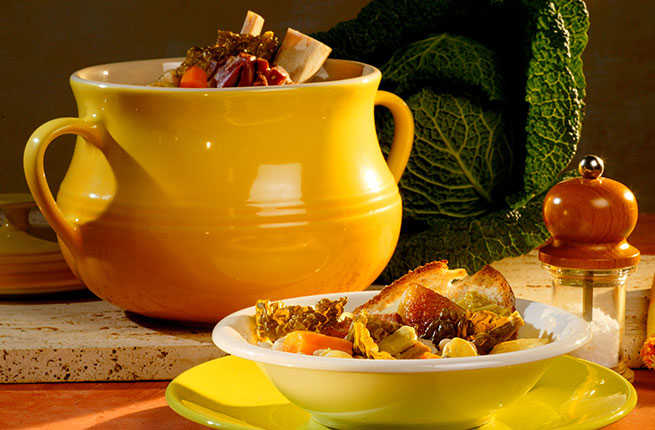
Garbure
Cassoulet’s oft-overlooked cousin garbure is a thick pork-and-bean stew native to the mountain villages of the Pyrenees. But unlike cassoulet, it contains a riot of fresh vegetables such as cabbage, turnips, and leeks, which lend pleasing textural contrast to the soft tarbais beans and slow-braised meats. When cooked properly, a spoon should stand upright in the finished stew, according to local culinary lore. Most Toulousains eat garbure in the winter months, but if you’re lucky enough to visit the region in the spring, keep an eye out for a fresher rendition made with snow peas and shelled broad beans.
Where to Eat: These days, garbure is prepared almost exclusively in the homes of French grand-mères, but depending on the season, you may spot it on the menu at Huguette, a sunny restaurant across from the Pierre Goudouli gardens.
Read More: 7 Unexpected Finds in Toulouse

Millas
Millas is southwestern France’s answer to polenta, and it serves as a blank canvas for a variety of savory and sweet flavor additions. Several butcher shops in the city center carry a simple (if unexciting) version of millas containing only cornmeal and water, which serves as a fine accompaniment to saucy roasts and braises. But the dish reaches new heights as a custardy treat that falls somewhere between cornbread and vanilla pudding.
Where to Eat: Save room for dessert at Le Si Bémol, a charming and affordable restaurant in the Saint-Etienne neighborhood that serves honey-drizzled millas with a dollop of vanilla ice cream.
PLAN YOUR TRIP: Fodor’s Toulouse Guide

Noir de Bigorre
There’s a new pig in town that’s giving jamón ibérico a run for its money. It’s called Noir de Bigorre, and like its Spanish counterpart, is black-haired and feeds on acorns, resulting in a ham that’s nutty, buttery, and deeply complex. This species of pig has always existed in the Pyrenees (the mountain range south of Toulouse), but by 1981, only 36 pigs remained. Thankfully, a dedicated group of livestock farmers has brought the breed back from extinction, and today jambon Noir de Bigorre is one of the region’s most promising epicurean exports.
Where to Eat: Noir de Bigorre pork has become a menu staple at Michel Sarran, the only two-Michelin-star restaurant in central Toulouse. Dishes change regularly, but recent standouts featuring the heritage breed include a trotter-and-chanterelle galette and a boudin noir “lasagna.”
PLAN YOUR TRIP: Fodor’s Toulouse Guide

Toulouse Sausage
There’s no harm in watching how the sausage gets made in Toulouse, since, by law, no mystery ingredients or preservatives can be added in the production. Fragrant with red wine, garlic, and smoked bacon, Toulouse sausages are equally delicious when grilled, fried, braised, and of course, when baked in cassoulet. Legendary sausage maker André “Moustache” Audouy, of Maison Garcia, supplies the city’s top restaurants from his stall in the Victor Hugo market. (Vacuum packing is complimentary, for those intrepid enough to try their luck at customs.)
Where to Eat: Moustache’s exceptional sausages shine at Brasserie Flo les Beaux-Arts, where they’re painted with démi-glace and presented unfussily on a mound of mashed potatoes. Insider tip: Call ahead to request a table overlooking the Garonne riverbank.
Read More: 7 Unexpected Finds in Toulouse
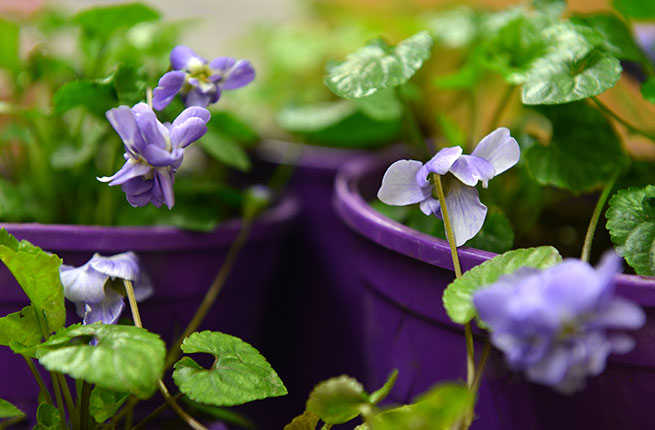
Violet Blossoms
France’s “Pink City” takes on a different hue in specialty shops like La Maison de la Violette, a veritable shrine to Toulouse’s favorite flower. La Maison’s syrups, mustards, and emollients—which feature essential oils from the fragrant blossom—make terrific souvenirs. The violet arrived in Toulouse via Italy in the 19th century, and since then, it has been a symbol of the city.
Insider tip: If you delight in zany festivals, visit in early February for the annual Fête de la Violette.
Where to Eat: Forego the traditional French breakfast and make a beeline to La Halle aux Pains, a bread bakery inside the Victor Hugo market. Buy a loaf of their wonderfully rich, violet-scented brioche, and— weather permitting— savor it on the grassy esplanade along the Garonne with a to-go café au lait.
Read More: 7 Unexpected Finds in Toulouse
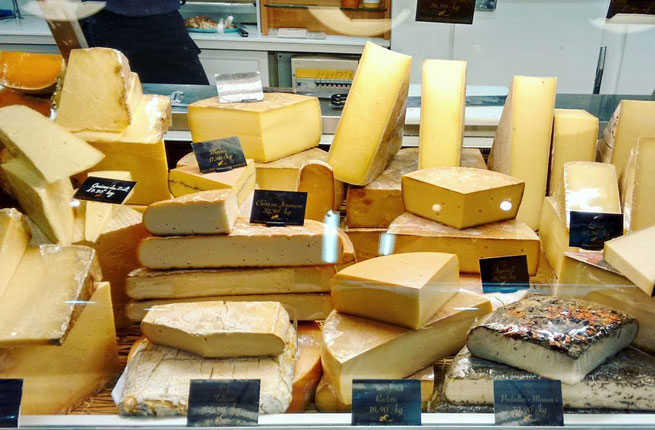
Cheese
Crusty bread, a glass of red wine, and a wedge of cheese—it’s the simple things that win you over in Toulouse, where you can sample a dizzying array of cheeses made in the surrounding countryside. Roquefort, the blue-veined sheep’s cheese aged in the caves of the Combalou plateau, is a familiar face, but it’s worth seeking out lesser-known local fromages such as Le Moulis, a buttery, holey cheese that stands up well to full-bodied reds, or Le Cathare, a nutty goat cheese dusted with wood ash and emblazoned with a Cathare cross.
Where to Eat: One cheese shop steals the show in Toulouse: Fromagerie Betty. What sets Betty apart is their proprietary cheese caves, where each moldy round is ripened to exacting standards before gracing the cheese case at any of the five storefronts around the city.
PLAN YOUR TRIP: Fodor’s Toulouse Guide

Caraques
Named after a 15th-century sailing ship called a carrack, these kelly-green hemispheres of pastry are a favorite Toulousain sidekick to coffee. To make them, pâtissiers bake rounds of almond-enriched sablé dough until flaky. These are then slathered with bittersweet chocolate ganache and blanketed in a thin layer of fondant.
Where to Eat: Sample this local delicacy at Pâtisserie Conté, a pastry shop off Place Saint-Etienne that’s been appealing to Toulousains’ sweet tooth for three generations.
Read More: 7 Unexpected Finds in Toulouse


